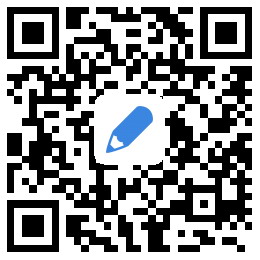英文短文:科學(xué)理論
Scientific Theory
科學(xué)理論
In science, a theory is a reasonable explanation of observed events that are related. A theory often involves an imaginary model that helps scientists picture the way an observed event could be produced. A good example of this is found in the kineticmoleculartheory, in which gases are pictured as being made up of many small particlesthat are in constant motion.
在科學(xué)中,理論是對所觀察到的相關(guān)事件的合理解釋。理論通常包含一個虛構(gòu)的模型,這個模型幫助科學(xué)家構(gòu)想所觀察到的事件是如何發(fā)生的。分子運(yùn)動理論便是我們能找到的一個很好的例子。在這個理論中,氣體被描繪成由許多不斷運(yùn)動的小顆粒組成。
A useful theory, in addition to explaining past observations, helps to predict events that have not as yet been observed. After a theory has been publicized, scientists design experiments to test the theory. If observations confirm the scientist’s predictions, the theory is supported. If observations do not confirm the predictions, the scientists must search further. There may be a fault in the experiment, or the theory may have to be revisedor rejected.
一個有用的理論,除了能夠解釋過去的觀測,還有助于預(yù)測那些未被觀測到的事件。一個理論公開后,科學(xué)家們設(shè)計實(shí)驗來檢驗這個理論。如果觀察證實(shí)了科學(xué)家的預(yù)言,這個理論則得到了驗證。如果觀察不能證實(shí)科學(xué)家的預(yù)言,科學(xué)家就必須進(jìn)一步的研究。或許是實(shí)驗存在錯誤,或許是這個理論必須被修改或拋棄。
Science involves imagination and creative thinking as well as collecting information and performing experiments. Facts by themselves are not science. As the mathematician Jules Henri Poincare said, “Science is built with facts just as a house is built with bricks, but a collection of facts cannot be called science any more than a pile of bricks can be called a house.”
科學(xué)家除了收集信息和操作實(shí)驗外還需要想象能力和創(chuàng)造性思維。事實(shí)本身并不是科學(xué)。正如數(shù)學(xué)家喬斯?亨利?波恩克爾所說:科學(xué)建立在事實(shí)之上,就像房子用磚砌成一樣。但事實(shí)的收集不能被稱作科學(xué),就像一堆磚不能被叫作房子一樣。
Most scientists start an investigation by finding out what other scientists have learned about a particular problem. After known facts have been gathered, the scientist comes to the part of the investigation that requires considerable imagination. Possible solutions to the problem are formulated. These possible solutions are called hypotheses.
多數(shù)科學(xué)家通過找出別的科學(xué)家在一個特定問題上的所知來開始研究。在收集了已知事實(shí)之后,科學(xué)家開始了研究中需要相當(dāng)想像力的部分。他們爾后擬訂對這個問題的可行的解決方法。這些可行的解決方式被稱為假設(shè)。
In a way, any hypothesis is a leapinto the unknown. It extends the scientist’s thinking beyond the known facts. The scientist plans experiments, performs calculations, and makes observations to test hypotheses. Without hypothesis, further investigation lacks purpose and direction. When hypotheses are confirmed, they are incorporatedinto theories.
在某種意義上,任何假設(shè)都是向未知的跳躍。它使科學(xué)家的思維超越已知事實(shí)。科學(xué)家計劃實(shí)驗、計算、觀測以檢驗假定。若沒有假設(shè),進(jìn)一步的研究便缺乏目的和方向。當(dāng)假設(shè)被證實(shí)了,就成為理論的一部分。
更多 英文美文、英語美文、英文短文、英語短文,請繼續(xù)關(guān)注 英語作文大全
英文博客網(wǎng) - 中國最大的英語寫作網(wǎng)站與英語學(xué)習(xí)者交流社區(qū)! - 英語日記 英語周記 英文交流社區(qū)
本文地址:http://www.autochemexpert.com/writing/essay/101300.html




